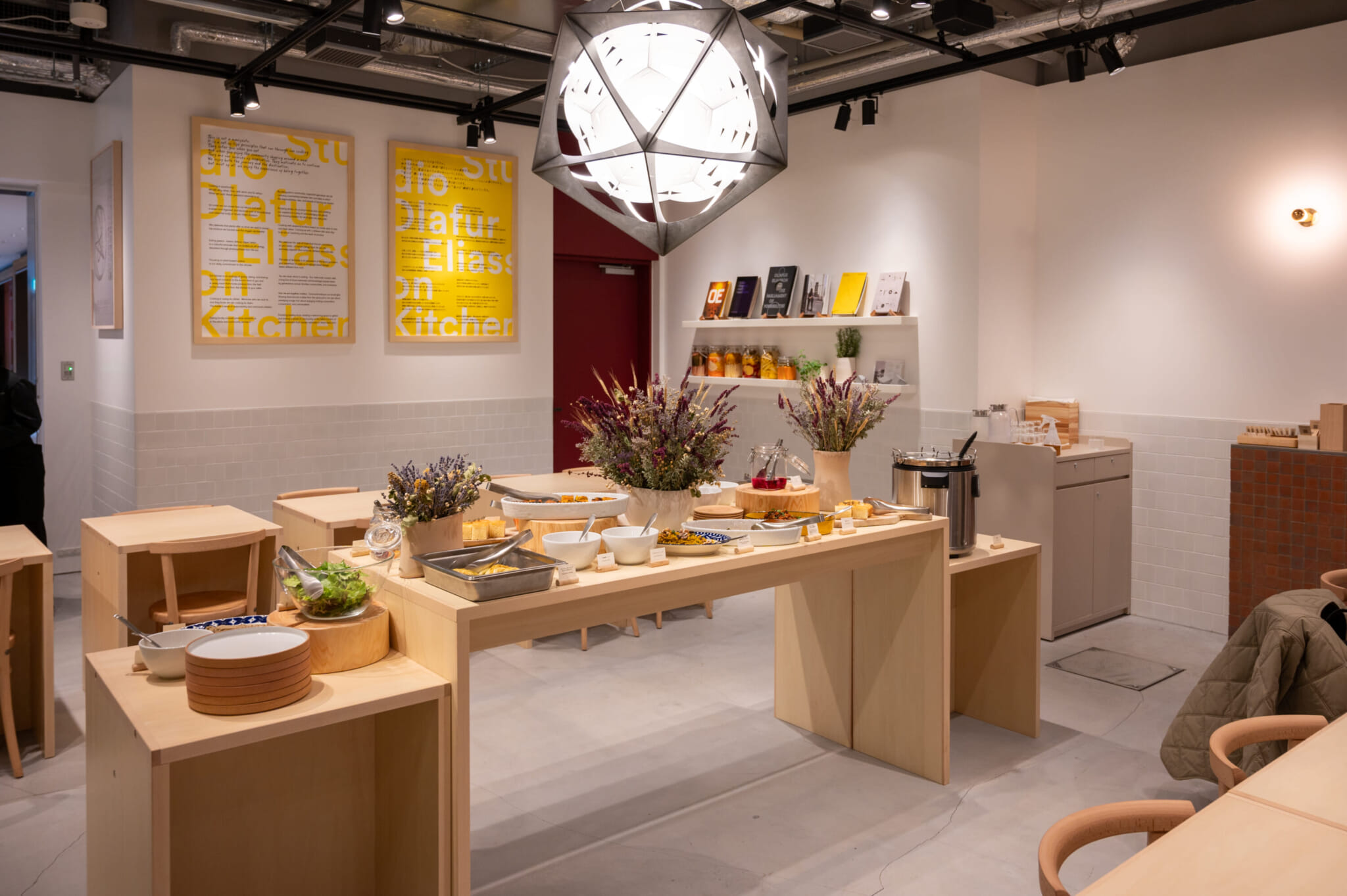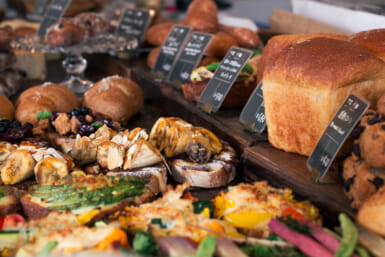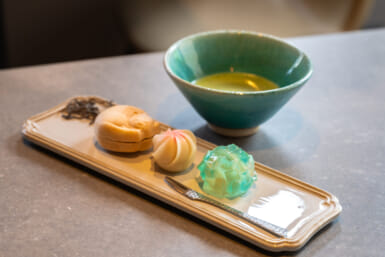When you arrive at Azabudai Hills for the first time, you have to take a moment to take in its sheer vastness. A multifaceted commercial complex in the heart of Tokyo, designed to create harmony between people and their surrounding environment, the space itself resembles a work of art, with intricate high-domed roofs that recall a cathedral, and stores ranging from minimalistic bakeries to ornately decked-out cafés. It’s basically a tiny, towering village, containing everything from the new teamLab space to an international school — and its own world-class art gallery, Azabudai Hills Gallery.
Having opened on November 24, the gallery is currently in the midst of its inaugural exhibition, Olafur Eliasson‘s “A harmonious cycle of interconnected nows.” Icelandic-Danish artist Eliasson is renowned for his large-scale installations that focus on sustainability and interconnectedness. It’s hard to think of a more fitting opening show, given the design and philosophy of the space. Accompanying the exhibition is a culinary experience called The Kitchen (stylized as THE KITCHEN), a collaboration between the Azabudai Hills Gallery Cafe and Eliasson’s own Studio Olafur Eliasson Kitchen (SOE Kitchen), a studio restaurant in Berlin that emphasizes food experimentation and gastronomical thought.
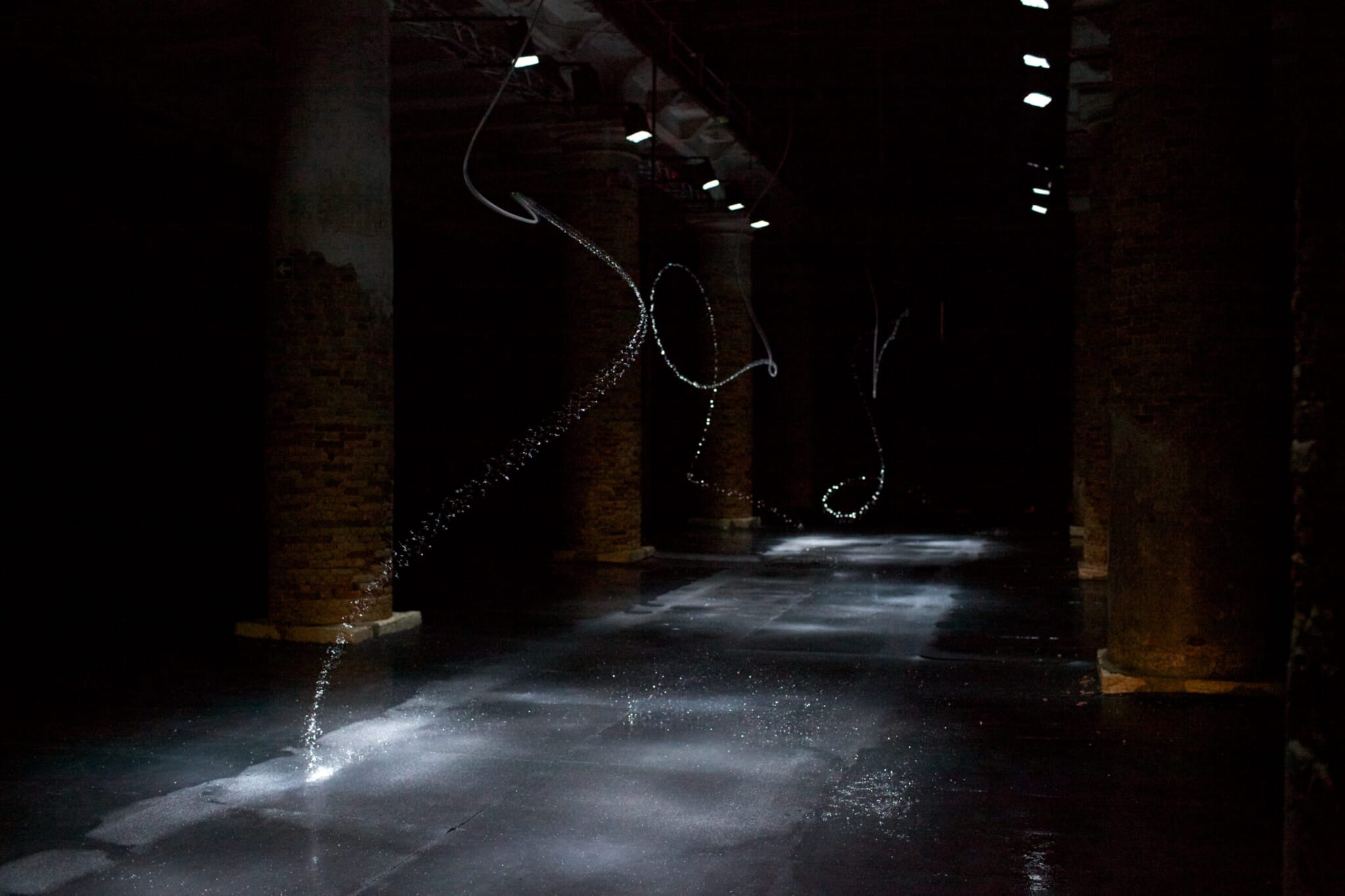
Your split second house (2010) Photo: Christian Uchtmann. Courtesy of Azabudai Hills Gallery
The Gallery
Eliasson’s exhibition starts with “Firefly biosphere (falling magma star),” a geometric sculpture that refracts bright red light onto the white walls that surround it. Although the bold red installation was immediately arresting, I actually found myself drawn to the details in the projected light. With lines and circles that seemed vaguely alive, the projection looked like cells under a microscope, creating a sense of scale that at once expands and contracts — simultaneously representing everything from the smallest unit of life to something as large as a collapsing star.
The theme of unifying the macroscopic with the microscopic continued as the exhibition went on. Eliasson sources natural materials from expansive places like deserts or glaciers to use in his paintings, which look like eyeballs or universes, a sheet of plant cells or waves. From the smallest to grandest scale, the use of geometry and physics in his works allows us to physically conceptualize things beyond our imagination.
The final piece, explained in simple terms, is a water installation with strobe lights. Water is sprayed down erratically from a high ceiling in a dark room, and the pulsing lights create an illusion of time stopping at every second. Each flash materializes an ephemeral moment, freezing it in time. Eliasson heightens the importance of a second, blending the previous instant into the current into the future. The room, though dizzying, felt somehow soothing, and made the passage of time feel like a beautiful thing.
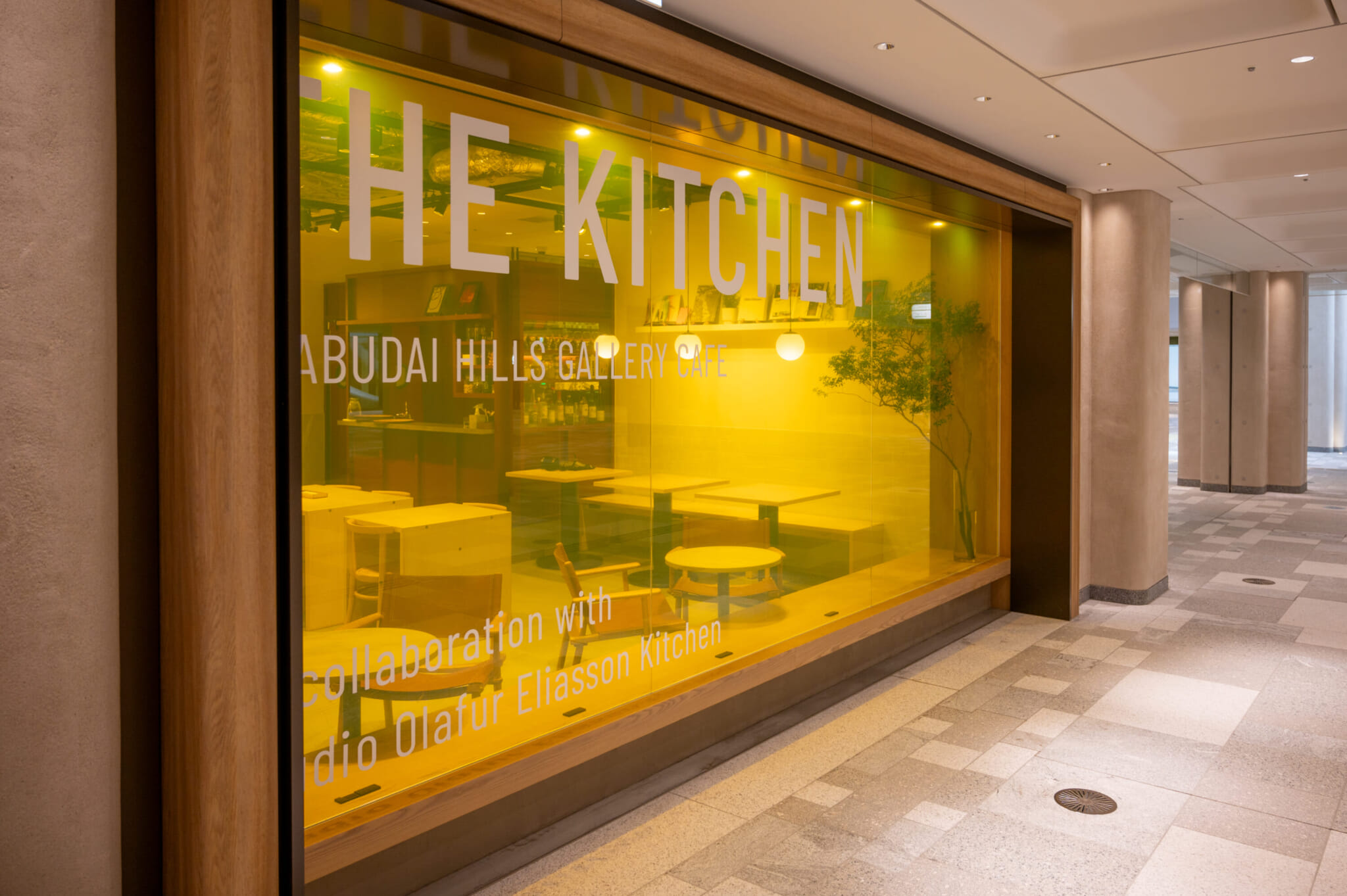
The Kitchen
The concept of the Azabudai Hills Gallery Cafe is to work in tandem with the current art exhibition. Its current collaboration with SOE Kitchen draws inspiration from Eliasson’s own experiment-based studio kitchen, with a special menu using local ingredients from the Tokyo area. “Synergy” may be a better word than “collaboration,” though, as The Kitchen’s work with SOE Kitchen is deep-rooted. Chef Takeshi Masutani, who went to Berlin to study with SOE Kitchen, creates his own recipes alongside some of Eliasson’s originals.
The Kitchen functions buffet-style, and guests can curate their own deli plate. Along with Eliasson’s famous recipes, like his pumpkin carrot cake and brown rice and black bean rice ball, Chef Masutani serves up his own original recipes that take inspiration from SOE Kitchen’s western influence. Ingenious dishes like amazake, carrot and wakame seaweed with ume plum flavored rapeseed and pumpkin salad with sake kasu (sake lees), yogurt and miso adorn the table. Each mouthful packs a punch with its unexpected flavor combinations, made possible by the fusion of Germany and Japan’s gastronomical traditions.
Entirely vegetarian and mostly vegan, one of the main aims of The Kitchen is to reduce carbon emissions. All the ingredients used in the dishes are locally sourced. There is, therefore, no need for any wasteful importing. They are also incredibly healthy. Chef Masutani incorporates powerful ingredients like curry powder and miso, as well as a lot of fermented products, including the koji fungus, to make for impactful and sustainable delicacies.
More than just a meal, a lunch at The Kitchen is a thought-provoking experience, one that makes you reflect on what you can do to be kinder to yourself and the environment. Communal care doesn’t have to be complex; it can start at the kitchen table.

Interconnected Nows
Both the exhibition and The Kitchen are grounded in the sensation of interconnectedness, from an atomic to universal scale. Eliasson’s artwork explores these themes with the use of geometry and physics. And The Kitchen allows visitors to experience it directly, in the form of sustenance.
In ways both profound and obvious, we connect and disconnect daily. A walk through a park blends my current reality — my now, each ephemeral moment frozen in time — with the nows of people, plants and animals that share the park with me. Zooming out, the collective now of the park exists in tandem with the now of the city it resides in. On a microscopic scale, cells in your own body intertwine their nows to keep you running.
Interconnectedness is found in time blending through a series of strobe lights, but it can also be found in something as mundane as the dinner table. The act of sharing a meal connects us with the food we consume and with each other — your body is now linked to the farmers who cultivated the mushrooms in your soup, and all the efforts that were made to get it to your home.
In the technological age, we’re connecting more frequently than ever. At the same time, however, it’s increasingly easy to overlook the interconnected connections that comprise our present reality. But as Eliasson’s work shows, there are myriad ways to be reflective, while also holding enough space to be responsible for our environment and for each other.

